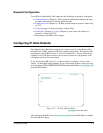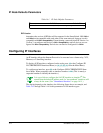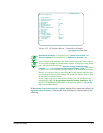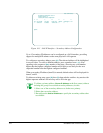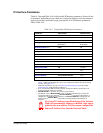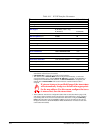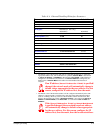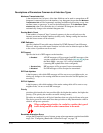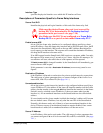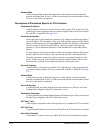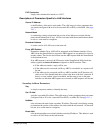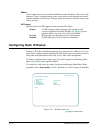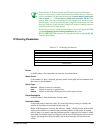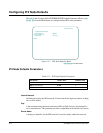
Configuring IP Routing 14-11
Interface Type
specifies the physical interface over which this IP interface will run.
Descriptions of Parameters Specific to Frame Relay Interfaces
Source Port/DLCI
identifies the physical and logical interface of this end of the frame relay link.
Make sure the physical frame relay port is not reserved for
backup DLCIs (as determined by the
For Backup Use Only?
parameter in the port record—see page 7-18).
Also Make sure this DLCI is not configured as a Frame Relay
Backup DLCI or as part of an intra-nodal frame relay PVC.
Enab le Inverse A RP
allows (if
Y
) the frame relay interface to be configured without specifying a desti-
nation IP address. Once the frame relay interface and its DLCI become active, the IP
function in the SmartSwitch 1800 sends an Inverse ARP (Address Resolution Pro-
tocol) request over the interface. The response will contain the destination IP address,
allowing the IP interface to become active.
If an ARP request from the SmartSwitch 1800 receives no response within 5 seconds,
the request will be resent every 5 seconds, up to 5 times. After the 5th attempt, a 30-
second timer will start, after which the re-send sequence will be repeated.
If
Enable Inverse ARP
is changed from
N
to
Y
, the SmartSwitch will immediately gen-
erate an Inverse ARP request.
If this parameter is set to
N
, a
Destination IP Address
(see next entry) must be con-
figured.
Destination IP Address
is the IP address of the end-to-end receiver for point-to-point frame relay connections.
The valid range of values guarantees that you cannot configure all
0
s or all
1
s for a
network ID, node ID, or subnet ID. (See page 14-1.)
Unnumbered Interface
allows the point-to-point frame relay interface to be configured without specifying a
source IP address. If
Y
, the address of the lowest IP interface number (not the lowest
address, but the number, in the range
0–256
, that identifies the interface) in the Smart-
Switch is used as a default source IP address. (It does not matter what type that
interface is.) All un-numbered interfaces on the SmartSwitch use the same default
address.
If a new interface with a lower number is added, that interface’s address will become
the new default source IP address, but only after the next IPL of the SmartSwitch.
Naturally, this feature works only if there is at least one numbered interface in the
device. If there are none, all un-numbered interfaces remain disabled. Once a num-
bered interface is added, all un-numbered interfaces will become active.
Source IP Address
is the IP address of the end-to-end sender. The valid range of values guarantees that
you cannot configure all
0
s or all
1
s for a network ID, node ID, or subnet ID. (See page
14-1.)



